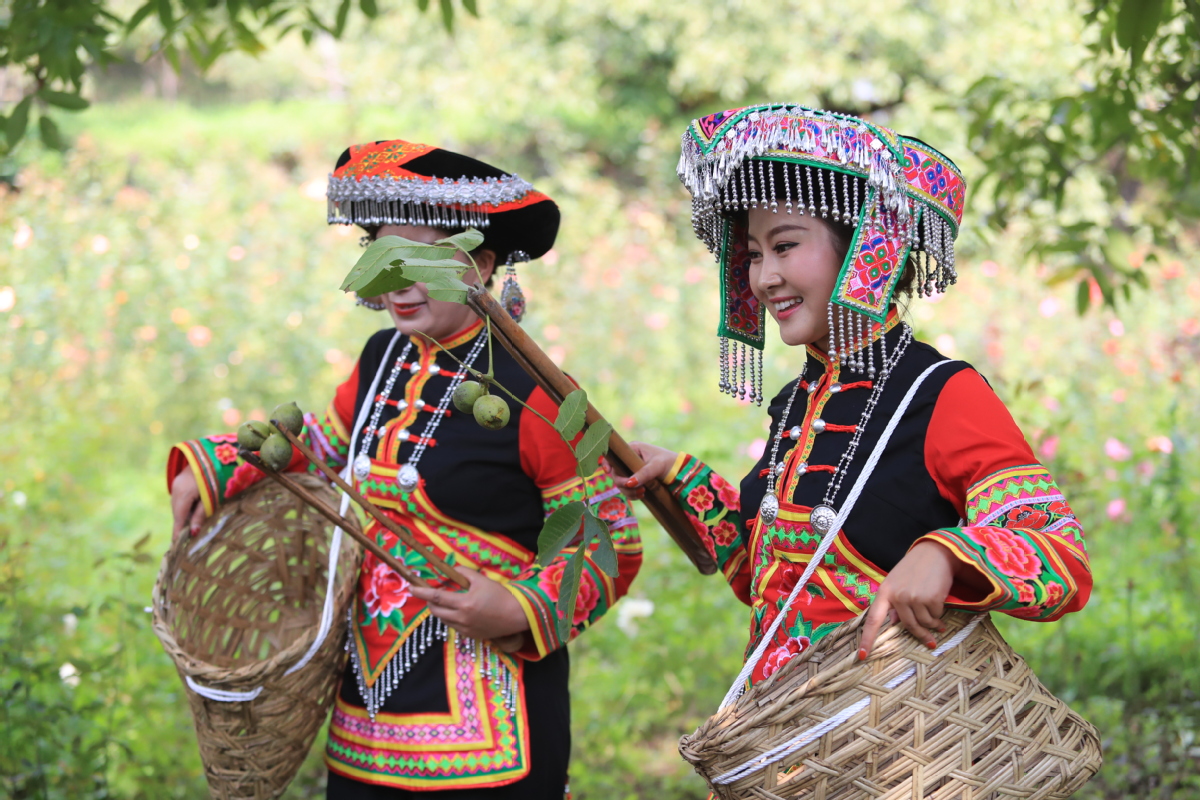Frontier areas see decade of transformation

Xi highlights great changes brought to people by targeted poverty-relief efforts

Hu Dexue, the former Party secretary of a border village in Cangyuan Wa autonomous county, Yunnan province, said he has witnessed China's efforts in transforming the border areas over the years.
That's why Hu and nine other veteran Party secretaries of villages on the border of China and Myanmar decided to write a letter to President Xi Jinping about how people's lives in border areas have improved.
On Aug 19, 2021, Xi, who is also general secretary of the Communist Party of China Central Committee and chairman of the Central Military Commission, replied to the letter.
Xi said that he was happy to learn about the great changes brought to local people by targeted poverty-relief efforts. Continued efforts should be made to step up rural vitalization and facilitate people's prosperity in border areas, he said.
"For many people, the border is just something they see on maps. For us, it's our home. So people living in border areas know better than others what territorial integrity means," said Hu, the 72-year-old former Party secretary of Banhong village.
Thanks to the targeted poverty-relief efforts undertaken since the 18th CPC National Congress in 2012, living conditions in those areas have improved markedly, particularly in terms of infrastructure, housing, healthcare and children's education, said Hu, a member of the Wa ethnic group.
"The villagers can now live a comfortable life in border areas. In addition, many young people have returned after new opportunities emerged in their hometowns, which are no longer poverty-stricken," he added.
Such change isn't unique in Banhong. It has been happening in villages along China's 22,000-kilometer land border-the longest in the world. The nation's central leadership believes achieving prosperity is key to making the border areas stable.
On March 9, 2013, when joining the delegation from the Tibet autonomous region in a panel discussion at the first session of the 12th National People's Congress, Xi said that "to govern the country well we must first govern the frontiers well", highlighting the importance of border security to China and its development.
When joining the delegation from the Inner Mongolia autonomous region in a panel discussion at the fifth session of the 13th NPC on March 5, Xi said that Inner Mongolia, as one of the regions along the border areas, bears a major responsibility for safeguarding border security.
Xi urged officials in the region to strengthen their awareness of the risks, improve their capabilities in terms of strategic thinking, and take effective measures to guard against various dangers and risks to ensure the security of the country's northern border.
China's nine border provinces and regions on land cover an area of 5.77 million square kilometers, about 60 percent of the country's territory.
Due to historical, natural and geological reasons, border areas in China have been traditionally less developed, so the task of boosting their development has been very challenging but necessary, said Lyu Wenli, a researcher at the Chinese Academy of Social Sciences' Institute of Chinese Borderland Studies.
- National observatory urges preparedness measures amid north China cold spell
- Chongqing celebrates wintersweet bloom with floriculture festival
- Cornell students explore China's agricultural development
- China makes strides in promoting child development and fertility-friendly society: association
- Community memory clinics help aging minds stay connected
- Guangzhou's bald cypress trees turn red after cold snap




































